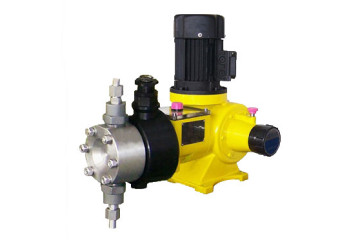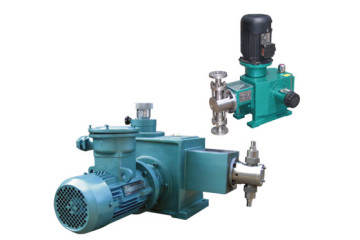Positive Displacement Pump Introduction
What is a Positive Displacement Pump? A positive displacement pump (PD) is a general term used to refer to any type of pump that does not have impellers. A positive displacement pump uses reciprocating or rotating parts to push fluid directly into an enclosed cavity until enough pressure builds up to push the fluid into the discharge system. These pumps are generally used for specific applications like viscous fluids or fluids that contain fragile solids. They are not capable of handling high flow rates like centrifugal pumps, but they are able to generate higher pressures.
How It Works
A positive displacement pump pushes a fluid and pressurizes it to enable it pass in the system by drawing it in a cavity and compressing the cavity to force out the fluid at the appropriate pressure in order to move through the system of pipes.
As earlier stated, a positive displacement pump does not have any impellers and do not rely on increasing the fluid’s velocity. Consequently, the velocity of the liquid inside a positive displacement pump is lower than in a centrifugal pump, which makes it desirable or appropriate for pumping viscous liquids and liquids that contain fragile solids.
Positive displacement pumps also work only within a certain range. The flow rate ranges from 1 gallon per minute (gpm) to 15,000 gpm, while the total pressure (head) ranges from 10 psi to about 100,000 psi. The horsepower of a positive displacement pump generally ranges from 0.5 hp to 5,000 hp. Viscosity ranges for these pumps vary according to the pump type, with some pumps having the capacity to handle millions of SSU viscosity.
Types of PD Pumps
There are two major types of the positive displacement pump. These include rotary pumps and reciprocating pumps.
Rotary Pumps include gear, vane, screw, lobe, peristaltic, and progressive cavity pumps. Any rotary-type positive displacement pump uses rotating parts to push the fluid in and out of the pump’s chamber. Some of these pumps have a tight clearance between the chamber’s walls and the rotating elements, which means they cannot be used for pumping abrasive fluids or large solids.
Reciprocating pumps include piston, hydraulic, diaphragm, plunger and other pumps. Any reciprocating-type positive displacement pump uses a repetitive mechanism to contract and expand the cavity/chamber at regular intervals. These pumps incorporate check valves at the pump’s inlet and outlet to guide the fluid through the pump as well as prevent backward flow.
Advantages
Generally, a positive displacement pump is ideal for uses when a constant flow has to be maintained. Most PD pumps need pressure protection using a relief valve to maintain the integrity of the system. They are ideal for pumping oil and highly viscous fluids due to the high pressures they can generate. Some are also self priming and others can be used to pump fragile solids.


